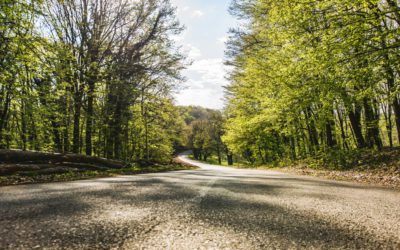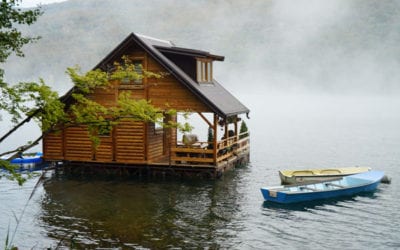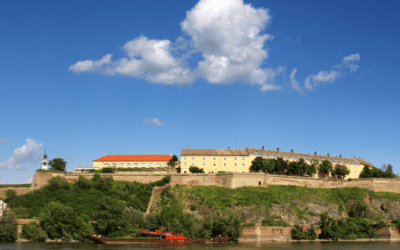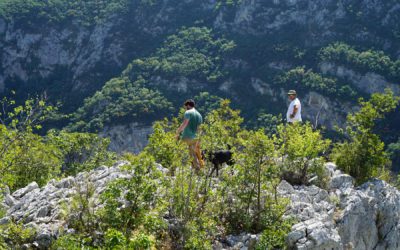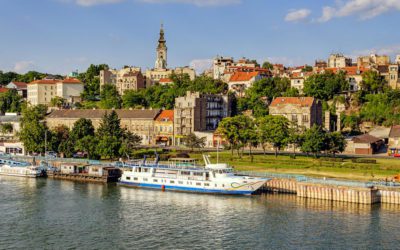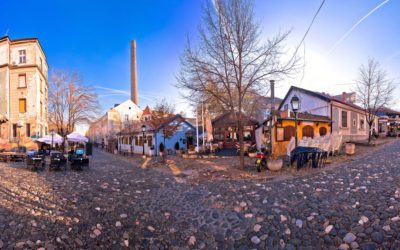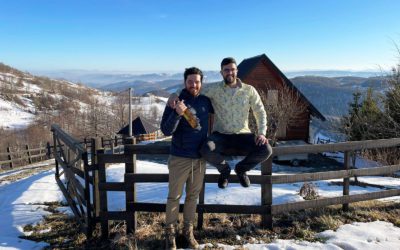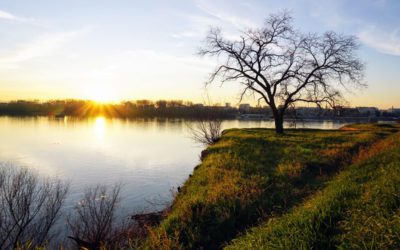Serbia Travel Guide: Tips, Reviews, and Inspiration
The Basics
Currency: Serbia’s official currency is the Serbian Dinar (RSD). Credit cards are now accepted in most hotels, restaurants, and shops, but it’s always safe to carry some cash for taxis or markets. If you have a bank card with little or no ATM fees (like our favorite Charles Schwab checking account card), the cheapest way to get dinars is directly through an ATM.
Power adapters: The power plugs and sockets are type F, like in most of Europe. The standard voltage is 230 V, meaning you can use your appliances if the voltage in your country is between 220 – 240 V (UK, Europe, Australia, and most of Asia and Africa). If you’re visiting from somewhere else (like the US), you’ll need a voltage converter to keep your electronics safe.
Make sure to bring your universal travel adapter with you since they can be more expensive or tougher to find here. We love the Bestek power adapter, which can charge up to 7 devices at the same time and also works as a converter, and the Tripshell Elago adapter if you’re looking for something smaller.
Language: Serbian is the country’s national language. It’s a very complicated Slavic language with two alphabets. You’ll notice most things around the country are written in both alphabets, but there are some street names and signs only written in Cyrillic. A majority of people speak English, especially in bigger cities like Serbia or Novi Sad, and they’re always looking to practice with foreigners.
In the more rural areas, you may encounter people who only speak Serbian. But don’t worry, they are generally very patient and eager to help tourists. When in doubt, you can rely on one of our favorite phrases: “Izvinite, da li govorite engleski?” (Eez-Vee-Knee-Te, da lee go-vaur-ee-te en-gle-ski) which translates to “excuse me, do you speak English.”
Visa requirements: Most countries in the Americas, Europe, and Asia do not require a visa for stays shorter than 90 days, however, some do. Those coming from most African countries will need to obtain a visa beforehand. Every foreigner visiting Serbia must register with the government by submitting a form known as a white card or bela karta. If you are staying in a hotel, hostel, or Airbnb, you don’t need to register in person, as the owners of the place will take care of it on your behalf. If you’re staying in a private residence, you’ll need to register in person at the nearest police station. Check this out for more information about this process.
If you’re looking for more details about life in Serbia, check out our full handbook and detailed guide to living in Belgrade here.
Not To Overlook
Healthcare: We highly recommend purchasing travel insurance before embarking on your trip. No matter how careful you are, accidents are prone to happen, and the last thing you want is to have a medical emergency abroad with no financial protection.
There are several companies out there, but after relying on them more than once, we can say we are extremely satisfied with SafetyWing and highly recommend it to others looking for peace of mind while traveling.
Overall, their platform is incredibly easy to use and the entire process is straightforward, and their customer service is knowledgeable, kind, and eager to help. What’s also great is that you can purchase the insurance at any point from anywhere in the world, meaning you don’t have to do it before your trip, and there is no limit on the duration of your trip.
And if you require medical assistance while in Serbia, we recommend visiting one of the three private healthcare institutions (MediGroup, Bel Medic, or Euromedik). They all have reliable centers throughout the bigger cities and appointments can be made easily and usually scheduled within the same day. We’ve had some funny interactions with doctors across Belgrade which you can check out here if you’re looking for a laugh!
Safety: This is a key, and sometimes surprising part of this Serbia travel guide. Though Serbia has a complicated history, we have never felt unsafe here. To be honest, it has felt surprisingly safe. As in many places, pickpocketing can happen, especially in public transportation, so make sure to keep your belongings close. Some taxi drivers tend to overcharge foreigners, so if you’re flagging a taxi in the city, make sure to choose one with a Pink Taxi sign. Alternatively, you can download apps like CarGo or Yandex.
You’ll likely read stories about corruption or the mafia. Unfortunately, those are true, but tourists are almost never the target of this type of crime. Just be aware of your surroundings and don’t be afraid to ask the locals if you have any more questions – they are very welcoming and want to make sure their country is represented in the best possible way. If you need even more convincing, check out our story on one of Serbia’s most unlikely expats.
People: Serbian people are very welcoming and eager to help. They are very honest and often don’t sugarcoat comments or questions, so don’t be surprised if you get asked personal questions shortly after meeting someone. It’s part of their charm and they generally just want to make sure you’re not overpaying and having the best time possible.
Serbians love coffee and Rakija (a Serbian-style brandy). They can often spend hours at a kafana (traditional cafe), chatting and sipping on one of these drinks.
How To Get Around
Public transportation: The city of Belgrade is generally very walkable, though there are buses and trams throughout the city as well. They are not the most reliable, so if you’re in a rush, a taxi may be the better alternative. You can buy a Beogradska kartica card at several kiosks and they work on a pay-as-you-go basis. The card will cost you about $3 and you can add as much money as you’d like. For reference, a 90-minute trip costs $1. You can use any of the doors when you enter the bus, just make sure to scan the card against the e-reader until you get verification.
The bus controllers occasionally get on the bus to enforce compliance with paying for ride feeds. They are in plain clothes so you won’t usually be able to recognize them. They get on with all the other passengers and will lock all the card scanner devices (so you can’t scan now if you didn’t before) before going through the bus asking to check your card to see if you have paid. If you haven’t, the fine is around $65. You can pay in cash or with a credit card on the spot.
Car rental: If you’re looking to travel throughout the country, we recommend renting a car. It’s the easiest way to get around and many of the roads have been recently renovated. However, roads tend to be narrow and windy around the mountain regions. There are local rental options that we’ve used before, including Zim Car Rental Beograd. But pick-up options are only offered in Belgrade and they do run out of cars pretty quickly in peak season. For a larger option with more variety, we recommend using Discover Cars to find the best deals.
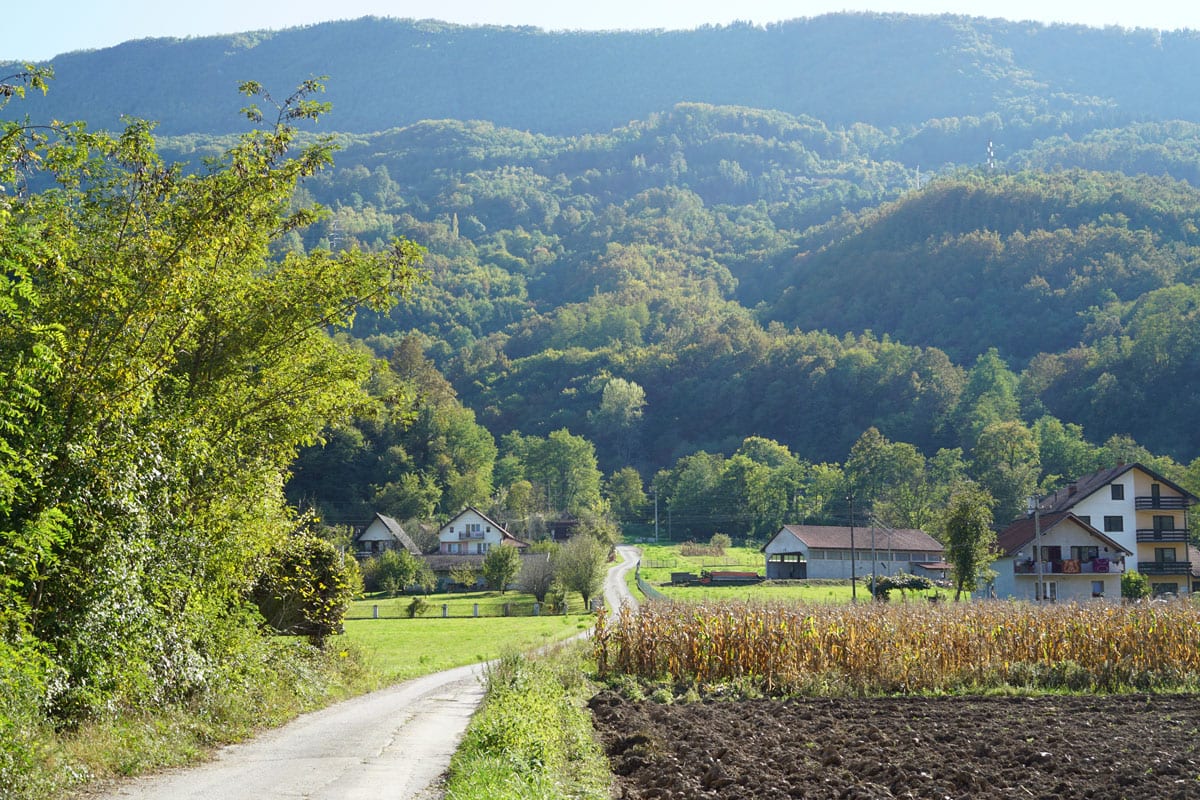
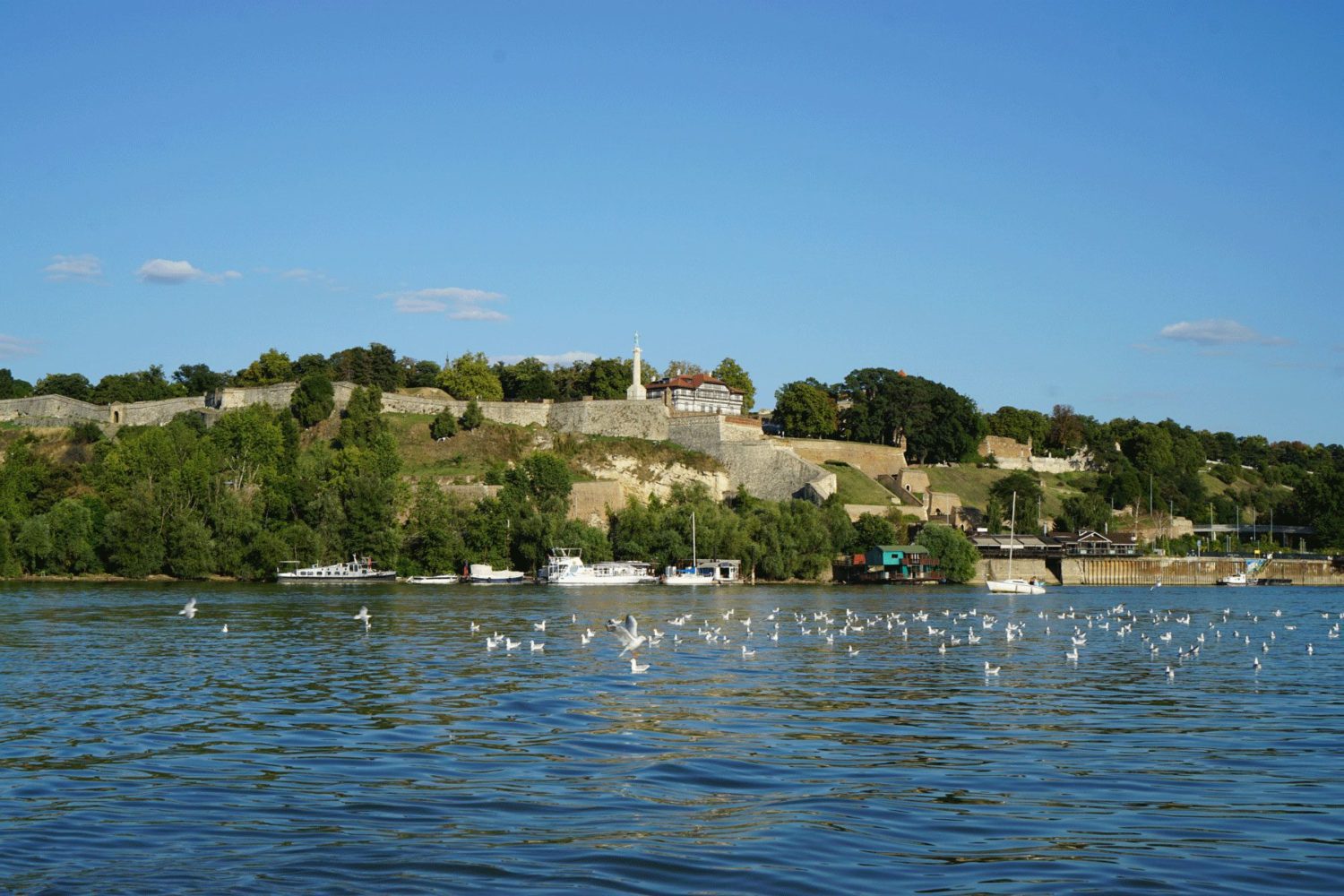
Best Time to Visit
Weather: No Serbia travel guide could be complete without a note about the weather. While you can visit Serbia at any time, keep in mind that Serbia’s climate is considered “moderately continental. This means summers are hot (up to 40℃/104°F) and winters are cold (as low as -15℃/5°F). Serbia can be impacted by the cold air referred to as Košava, which usually comes from the southeast, from the Carpathians in the east, coming into Serbia through the Romanian border. It then blows northwest through Serbia and towards the rest of the continent. And it’s also hit by the warm air from the Mediterranean Sea or Africa, so the temperature tends to vary greatly.
For us, the best time to visit Serbia is between April-June or September-November. You’ll notice people really come alive once Spring hits and temperatures become milder, and the Fall months push everyone to enjoy the last few months of sun and the turning leaves. If you choose to come in the winter, we would recommend avoiding bigger cities and sticking to the mountains as the air can become very unpleasant when people start burning coal for heat.
Festivals
EXIT Fest is the most popular and it takes place every year in the Petrovaradin fortress in the city of Novi Sad in July or August. It is a renowned music festival across Europe, with more than 1000 artists (including David Guetta) performing at over 40 stages. We attended in 2021 and getting to watch bands perform from all over the world in an ancient fortress is an unforgettable experience!
Lovefest is another summer music festival, generally held every first weekend in August in the city of Vrnjačka Banja. It’s known for its different stages – some with pools, some surrounded by trees and house tunes, and some that only fit 99 people to keep the feel small.
May is all about food festivals around the country, with everything from honey to sausage. In July, the municipality of Bajina Bašta hosts Drina Regatta. It goes on for three days and has everything from swimming and fish soup competitions, to a fun day floating down the Drina River on a raft with music and hundreds of people.
And in August or September, the Belgrade Beer Fest takes over a big park in Belgrade for five days, serving domestic and foreign brews.
Holidays
If you’re looking for something very traditional, you can see locals jumping into different lakes around the country, racing for the Christian cross in January. Many believe the water keeps away unclean forces, heals the sick, and protects the healthy. And in February, wineries across Serbia celebrate Saint Trifun on Valentine’s Day. He is widely venerated as the protector of wine and vineyards, and on his day local priests bless the branches of a vine to bless the new wine season. We were invited by locals to enjoy leftovers the day after this holiday and it is still one of our favorite memories.
Slavas: Slavas are one of the most common traditions across Serbia. This is a Serbian Orthodox Christian tradition where the family celebrates their family saint, considered their protectors. There are different ways to celebrate, but they have usually been going on for generations and generally involve special rituals and lots of good food and wine.
If you ever go to one, be careful about eating too much food in the first round. Even if it looks like the main course, it probably isn’t!
Rough Budget: Serbia tends to be a fairly affordable country, but of course, prices can be as cheap or expensive as you’d like. Prices in Belgrade are more expensive than in the countryside, with accommodations being the largest expense. The rough estimate below applies to Belgrade prices, which you can assume to be generally the most expensive around the country.
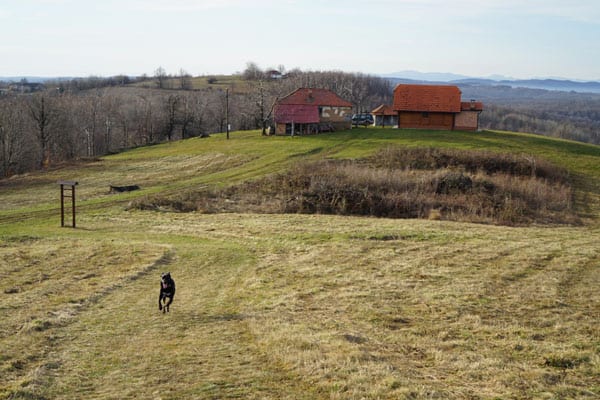
Accomodation (per night)
- Private room: $15-30
- Hostels: $20-50
- Mid-range: $60-90
- Splurge: $100+
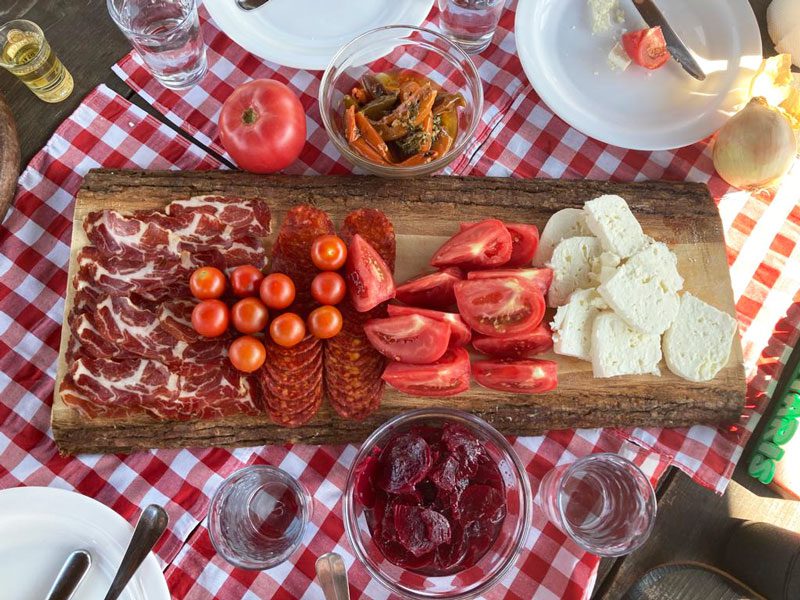
Food (meal for one)
- Bakeries/street food: $1-3
- Restaurant: $5-15
- Very nice restaurant: $15+
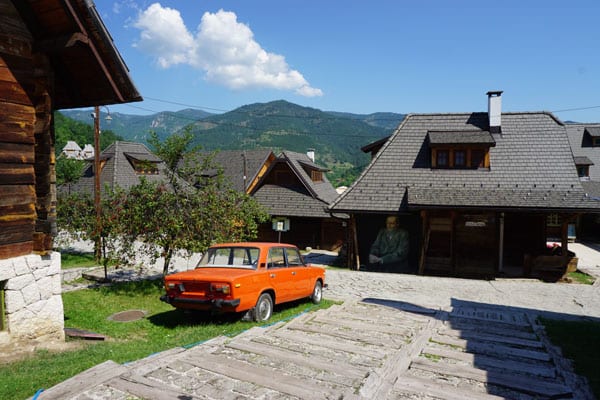
Transport
- City bus: $3 for a card + $1 per 90 minute ride
- Multi-city bus: $5-15 depending on distance
- Rental car: $25 per day
Key Serbia travel guide tip – electronics in Serbia are very expensive. They are all generally imported, so prices are much higher than they would generally be in the US. So if you’re hoping to buy a camera or a kindle, for example, make sure to bring it from home or purchase it in advance. It will save you quite a bit of time and money – just make sure to follow any voltage rules to keep them from frying.
Where to Stay
Serbia is a cultural mix between east and west – and has something to offer everyone. It has a buzzing vibrant capital city, centuries of history to explore, beautiful lust mountains, and remote spots to relax in.
The range of accommodations varies widely – from affordable hostels and weekend homes to luxurious hotels in the city. But, finding the right place can be a time-consuming challenge, especially if you go remote.
That’s why we compiled two lists for you: one has the best places to stay across Serbia, suiting every type of travel budget, and the other one is specifically about the pros and cons of the top neighborhoods in Belgrade.
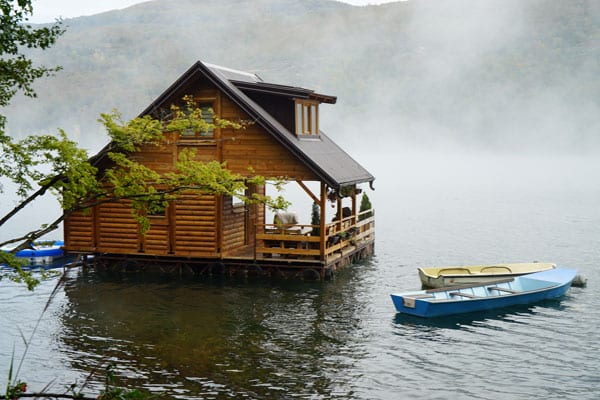
Where to Stay in Serbia
Favorite accommodations in Belgrade and around the country, for those traveling on a budget or for those looking to splurge on a vacation.

Best Neighborhoods in Belgrade
Guide outlining the pros and cons of six key neighborhoods in Belgrade and our favorite accommodations for each of them – from luxury to budget spots.
Where to Go
For a country about the size of Florida, Serbia varies dramatically both culturally and geographically in different regions of the country. Each region has a lot to offer and similarly to other places, the capital city is a region in and of itself. While this Serbia travel guide is quite general and offers an overall approach to the country, you can check out the four travel guides below for tips for visiting the region and the top things to do and see in each of them.
Belgrade
North Serbia
West Serbia
East Serbia
Tips for Traveling with a Pup
Serbia is one of the most dog-friendly countries we’ve ever been to. Most people love dogs and are generally very welcoming of them. Many families in Serbia have pets, and it is not uncommon to see dogs out and about in public places. Dogs are welcome in most restaurants and cafes, with few exceptions. Of course, it’s always safe to call first if you plan on bringing your pet, but the list of places we’ve been denied because of a pup is very small.
One of our favorite things about Serbians is their understanding that dogs are dogs. If our pup gets into a little squabble with another dog, that owner will generally understand that it’s best for the dogs to figure it out themselves. You’ll rarely see the other person get upset or try to get involved, which we greatly appreciate.
Dogs off leash are common and we’ve been particularly impressed by how well-trained some dogs are, walking right next to their owners on the street. We certainly cannot let our dog Piper off-leash on the street, but we do love how common it is to see dogs playing off-leash in parks or fortresses across Belgrade.
However, two negative things to note: 1) there are a lot of stray dogs, particularly in the countryside, so don’t be surprised if you see them. If you find yourself walking in a park and stumble upon a group of strays, we’ve been told the best way to scare them away (if you need to) is to scream at them or hit a stick against a tree, and they’ll be too scared to continue. We’ve only had this happen once to us in our three years of being in Serbia.
And 2) the idea of fixing your dog is not yet popular in Serbia so you’ll notice some protective issues, particularly with male dogs, so just keep an eye out.
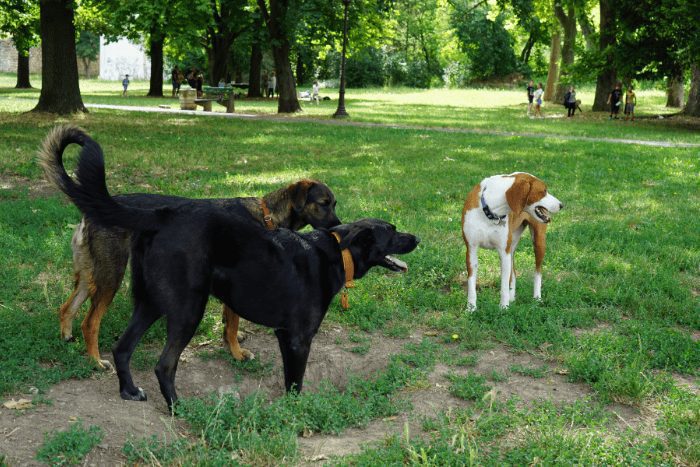
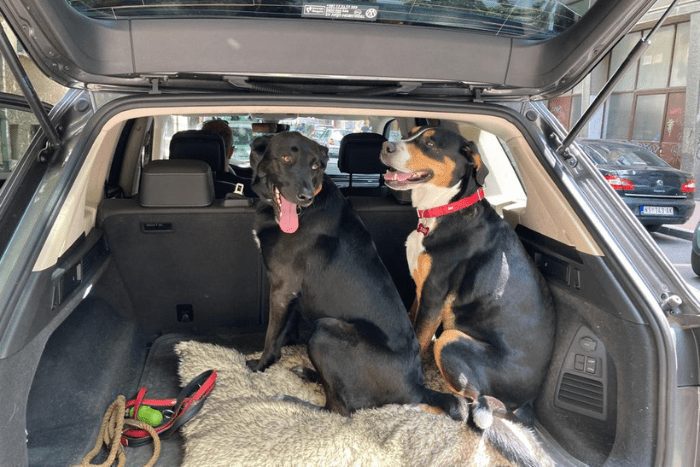
Save for Later? Pin It!
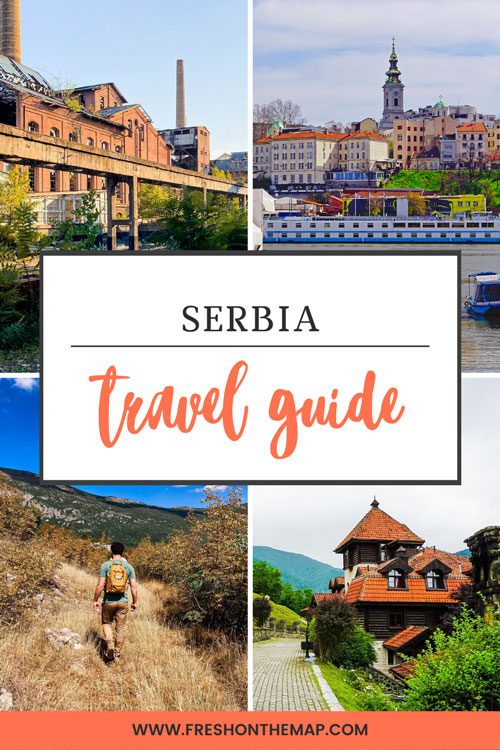
Serbia Travel Guides
Unique Serbia Itinerary For All Types of Travelers (2024 Update)
Three one-week itineraries for all kinds of travelers – from those looking to stay in the cities to those seeking to explore the outdoors.
Where to Stay in Serbia: Our Favorite Hotels and Accommodations
Accommodations in Serbia vary widely – from affordable weekend homes to luxurious hotels. Check out our top recommendations on where to stay.
Unlock Northern Serbia: Places to Visit in Novi Sad in 2024
Looking to explore Northern Serbia? Check out this comprehensive guide for the best places to visit in Novi Sad and around the region.
Discover Tara Park: A Travel Guide to Exploring West Serbia
Everything you need to know about visiting west Serbia – from hiking the mountains and swiming the lakes to exploring the charming villages.
Tips for Visiting Sićevo Gorge in East Serbia
Full travel guide to Sićevo – one of the most magical villages in Serbia, with hiking trails, old vineyards, and charming hospitality.
20 Unmissable Things to Do in Belgrade in 2024
After living in Serbia for two years, we created a list of our favorite things to do in Belgrade – from parks to the trendiest spots to try.
Where to Stay in Belgrade: 2024 Guide to the Best Neighborhoods
Pros and cons of the main neighborhoods in Belgrade and our favorite accommodations – compiled after living in the city for 2 years.
It’s Not a Must, But It’s Better to Have a Serbia Tour Guide
If we are looking to explore Serbia, Zeljko Petrovic, a registered Serbia tour guide, is our go to – and here is why he should be yours too.
Ultimate Road Trip Along Serbia’s Danube River
The Danube connects 10 countries and makes for an incredible road trip across Serbia. Check out our 5-day itinerary and suggested stops here!
